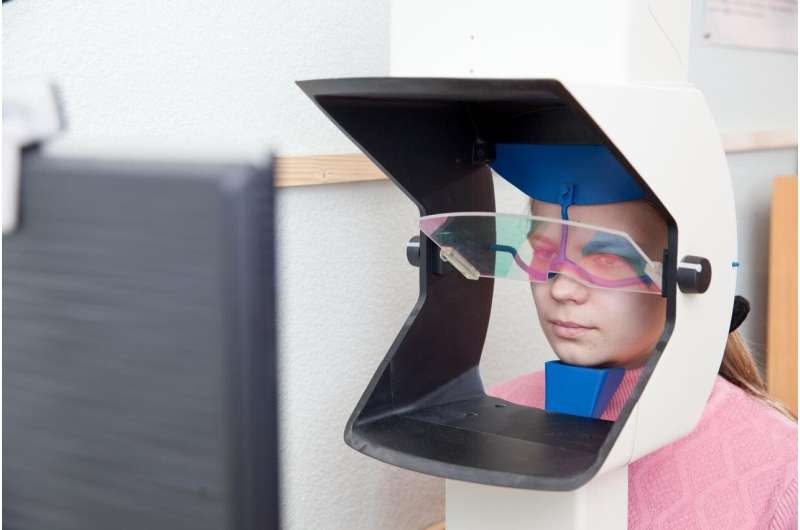Researchers investigate the effects of eye movements when reading texts in different languages

The existence of language universality has been a key issue in psychology and linguistics, since the understanding of universals is crucial for the development of information perception models.
In the course of their in-depth study of linguistic universality, Lobachevsky University researchers studied readers' eye movements when reading texts in different languages. The research was aimed at studying the universal and language-specific effects of eye movements while reading texts. For this purpose, a comparison was made of Russian-speaking students' eye movements when reading Russian texts with eye movements of English-speaking students when reading English texts.
Sentences were selected as units of analysis, and indicators reflecting the global properties of the eye movements when reading were analyzed and compared. It should be noted that the texts used in the study were translated versions of the original English texts.
The study involved the use of eye tracking technology. Eye tracking is a process of determining the coordinates of the point of gaze, i.e. the point of intersection of the eyeball optical axis and the plane of the observed object or the screen where some visual stimulus is presented.
As noted by one of the authors of the study, Valeria Demareva, Associate Professor of the Psychophysiology Department at the Faculty of Social Sciences of Lobachevsky University, the researchers tested their hypothesis in which "density", i.e. the information load of the words of a language is a universal parameter that determines eye movement while reading texts in this language. Since words in the Russian language are longer than in English, the information density of words in the English language should be greater. Consequently, the number of fixations (when one's gaze point is maintained in one place for a certain amount of time) and the amplitude of saccades (length of eye movements) will be greater while the duration of fixations will be smaller when reading equivalent texts in Russian compared to those in English.
It was found that when reading equivalent texts Russian-speaking students showed a longer total time for reading sentences, with fewer fixations, smaller amplitude of right-sided saccades and shorter fixations than English-speaking students showed when reading English texts.
"Thus, the results of the study confirm the hypothesis of a shorter duration of fixations, but are contrary to the hypothesis of saccades with a higher amplitude and more fixations in a less information-dense Russian language in comparison with English. It can be assumed that eye movements in this study were influenced by other specific features of the Russian language (in addition to the information density). Consequently, the density of the language is not a universal factor affecting the eye movement when reading," says Valeria Demareva.
The results obtained on language universals and specifics of the Russian language can be used to optimize the process of teaching Russian as a foreign language. It is possible to develop an original methodology for selecting individualized exercises to improve language skills, based on eye tracking data.
Psychophysiological studies of the density effect in the Russian and English languages are important for developing cross-linguistic models for reading and are highly relevant.
More information: Valeriia A. Demareva et al. Is Information Density a Reliable Universal Predictor of Eye Movement Patterns in Silent Reading?, Advances in Neural Computation, Machine Learning, and Cognitive Research III (2019). DOI: 10.1007/978-3-030-30425-6_9




















